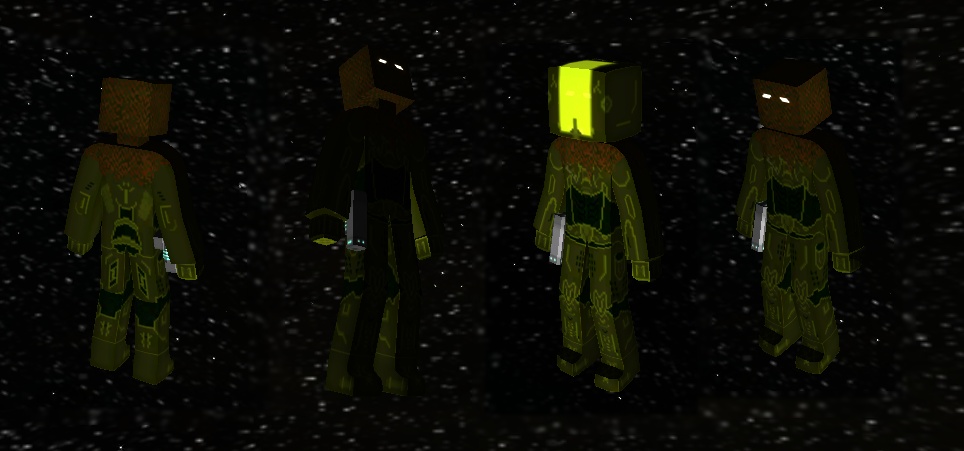I'm going to make sure everyone gets this straight from the start: This is NOT a replica of the "Venator" armour from Halo 4. The word "Venator" is Latin for "Hunter" or "Huntsmen/man". The skin did however, take heavy inspiration from these fellas and Master Chief's armour. I repeat though, it is NOT a replica of anything.
Now that we are all clear, here's the skin!

I spent a lot of time on this, and I'm still not happy with the helmet or arms yet. I'm going to upload it in it's current state anyway though.
So thoughts, opinions, constructive criticism is all welcome and appreciated! I'll put the download up soon.
Now that we are all clear, here's the skin!

I spent a lot of time on this, and I'm still not happy with the helmet or arms yet. I'm going to upload it in it's current state anyway though.
So thoughts, opinions, constructive criticism is all welcome and appreciated! I'll put the download up soon.
